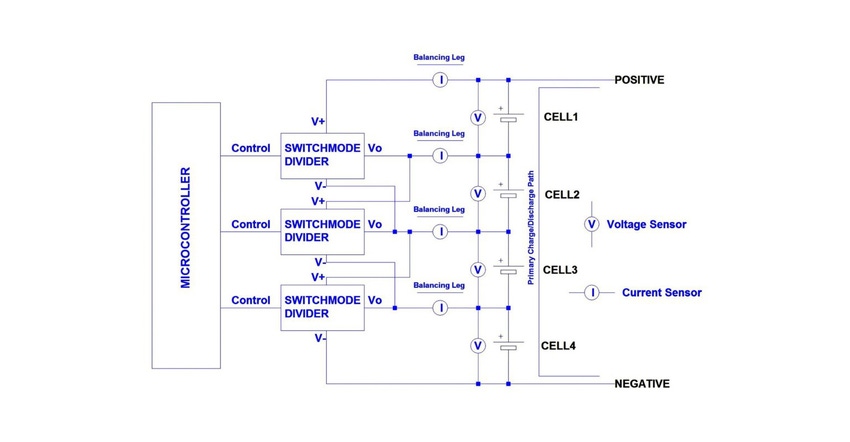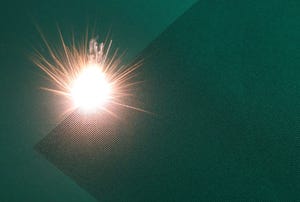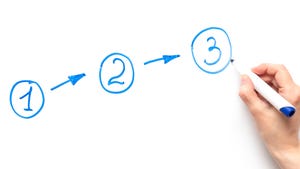Active Balancing Innovation Maximizes Li-ion Battery Potential
Battery management system monitors cell conditions to distribute energy just where it’s needed in the stack. Co-creator Clint O’Conner explains.
August 1, 2022

In 1980, Clint O’Conner graduated from Harvard University with a B.S in Applied Mathematics/Economics. In 1972, Eric Grasshoff received his B.S in Physics from Texas A&M, following which he would spend the next 49 years as an EE designing analog systems. Together, the two believe they have developed a battery management technology that could revolutionize the industry.
Their new company, True Balancing is a San Diego-based startup that improves upon active balancing technology. Battery Technology had the chance to ask O’Conner about the new technology, what it does, and the impact it could have on the industry.
What does it mean for a lithium-ion battery to be out of balance? What are the negative consequences?
O’Conner: Out-of-balance conditions occur in batteries that have multiple cells connected in series. In an out-of-balance battery, the cells are at different states of charge (SOCs).
In a perfect battery, the capacities of all of the cells would be identical and the SOCs of all of the cells would also be identical. However, there is no such thing as a perfect battery. So, batteries—particularly, lithium-ion batteries—tend to drift out of balance over time and use.
When there are variations in cell capacities, fully charging the battery becomes a challenge. In a battery, if you continue charging when one or more cells are full (at 100% SOC) those cells will be overcharged and will be damaged. If you don’t want to overcharge the cells, you would stop charging the battery when the smallest cell reaches 100% SOC, at which point all of the other cells would be less than 100% SOC, and they would all be at slightly different SOCs. This is an out-of-balance battery, and this is why batteries need balancing systems.
What about a lithium-ion battery makes it susceptible to becoming out of balance?
O’Conner: The shape of the impedance curve of lithium-ion cells is what makes them difficult to balance.
If you look at the impedance curve of a lithium-ion battery, you will see a number of sharp corners where the impedance curve goes from low to high are what make li-ion cells so difficult to balance. What this means is that if you overcharge or over-discharge a li-ion cell by a very small amount, the cell will quickly shift into a high impedance area of the curve.
This will accelerate cell degradation and will shorten the life of the battery. And operating the cells in the high impedance areas of the curve generates heat that can degrade system electronics and in extreme cases can cause battery fires.
Is balancing a concern in other battery chemistries and technologies besides lithium-ion?
O’Conner: Any battery can get out of balance. The two major factors that can make batteries susceptible to getting out of balance are variations in cell capacity and having an impedance curve that is similar to li-ion cells.
In the past few years, variations in cell capacity have become less of a problem – particularly for batteries made by tier-1 manufacturers using well-established chemistries such as NMC or LFP. However, variation in cell capacity hasn’t been eliminated, even in batteries that are the best of the best. Cell capacities still drift over time, and there will always be a certain percentage of batteries that get out of balance.
What is True Balancing and how is it achieved?
O’Conner: True Balancing is a new approach to active balancing – so I’ll start with a quick description of what active balancing is.
Active balancing systems attempt to keep a battery in balance by moving energy from cell to cell within the battery. This keeps the energy in the battery, as opposed to passive balancing systems that try to balance the battery by bleeding energy out of it.
As an active balancing technology, True Balancing balances a battery by moving energy from cell to cell within the battery. This figure shows the circuit diagram for a True Balancing system for a 4S battery.
The heart of True Balancing is a circuit called a switch mode divider (SMD). “Heart” is a good metaphor here, because the SMDs manage the flow of energy within the battery. And if the SMDs are the heart of True Balancing, then the microcontroller (µC) is the brain. It receives data from the voltage and current sensors and uses an algorithm to determine where energy needs to be moved, what rate to move it at, and when to start and stop balancing.
True Balancing uniquely has the ability to calculate the impedance of each cell in the series stack. To do this, the circuit has a voltage sensor and a current sensor connected to each cell in the battery. By measuring voltage and current associated with any given cell, we can calculate impedance for that cell. Specifically, True Balancing can calculate DC resistance; AC impedance at frequencies from 1hZ up to about 10kHz; static impedance; and dynamic impedance (which is the first derivative of static impedance). We are aware of no other balancing technology that can provide this data, and impedance measurements provide valuable information on the condition of the cells as they age in the battery pack.
This allows True Balancing to perform the exact equivalent of a full CCCV charge cycle on each cell in the series stack.
What are the benefits of using True Balancing in a design?
O’Conner: There are a number of benefits to using True Balancing in a design. True Balancing maximizes the available capacity of any battery for the entire life of the battery, regardless of how mismatched cell characteristics become. It provides true, absolute maximization of battery capacity for the entire life of the battery. We aren’t aware of any other balancing technology that can make that claim.
True Balancing also maximizes battery life. With True Balancing, loss of battery capacity due to out-of-balance is completely eliminated, which keeps the battery running longer.
And True Balancing performs better than other active balancing technologies—higher balancing current; much more efficient; able to measure cell impedance; able to complete a full CCCV charge cycle on each cell; and more.
How easy is it to implement True Balancing into an existing design or battery management system? Is it plug-and-play, or does it require a system redesign?
O’Conner: True Balancing isn’t a plug-and-play drop-in. It requires a modification to the existing BMS. Basically, the passive balancing system would have to be removed from the BMS and replaced with True Balancing.
This modification isn’t difficult. True Balancing was designed from scratch for easy system integration. True Balancing operates autonomously as a standalone sub-system that manages charge, discharge, and balancing. It just requires a single data line to the master microcontroller on the BMS. A complete redesign of battery management electronics isn’t needed.
Finally, any advice for young engineers hoping to begin a career in batteries and energy storage?
O’Conner: This is an exciting time to be involved in batteries and energy storage. There is an enormous opportunity for developing new and improved technologies. Today’s battery, energy storage, and EV industries are at about the same level of maturity as the industry for gasoline-powered cars were in 1920. Think about all of the improvements made to ICE vehicles in the past 100 years, then use your imagination to dream up new technologies that will improve the electrically powered world of tomorrow.
About the Author(s)
You May Also Like





